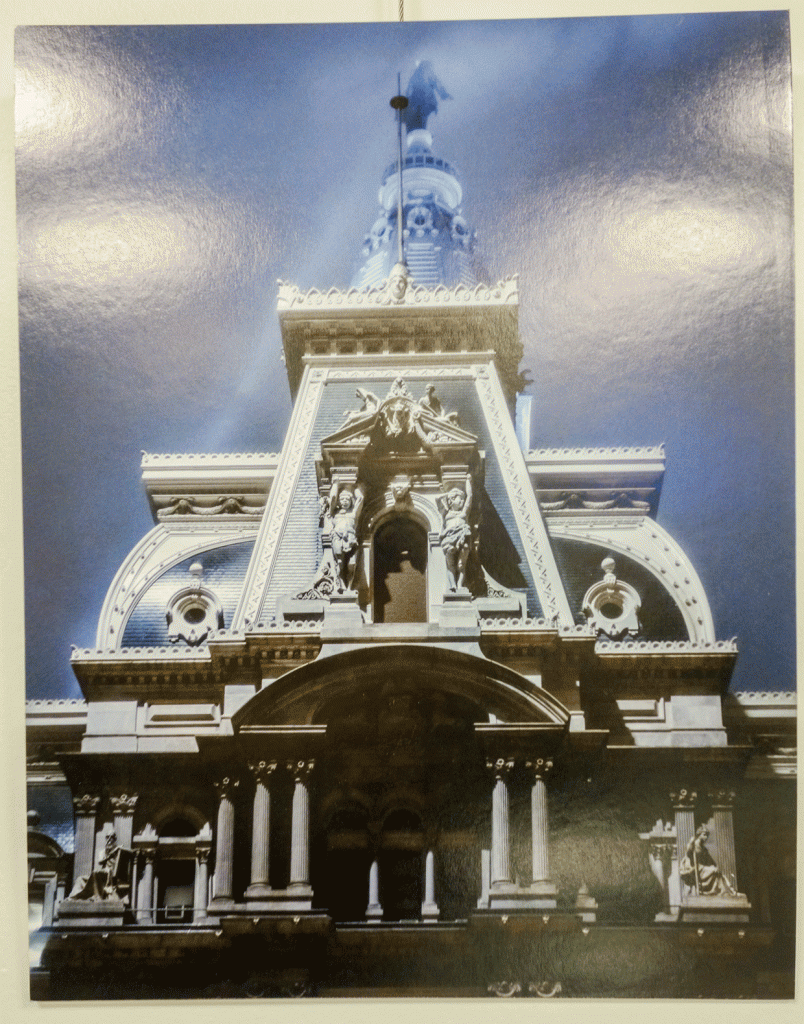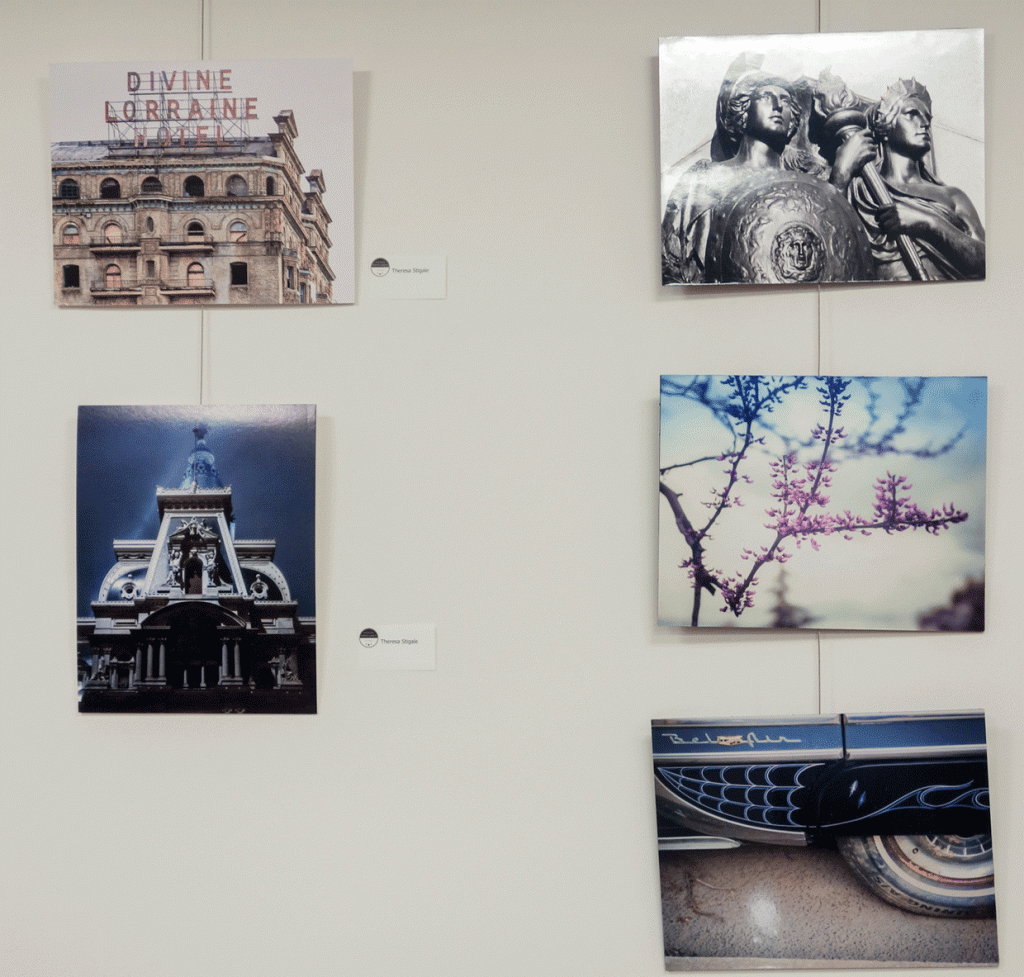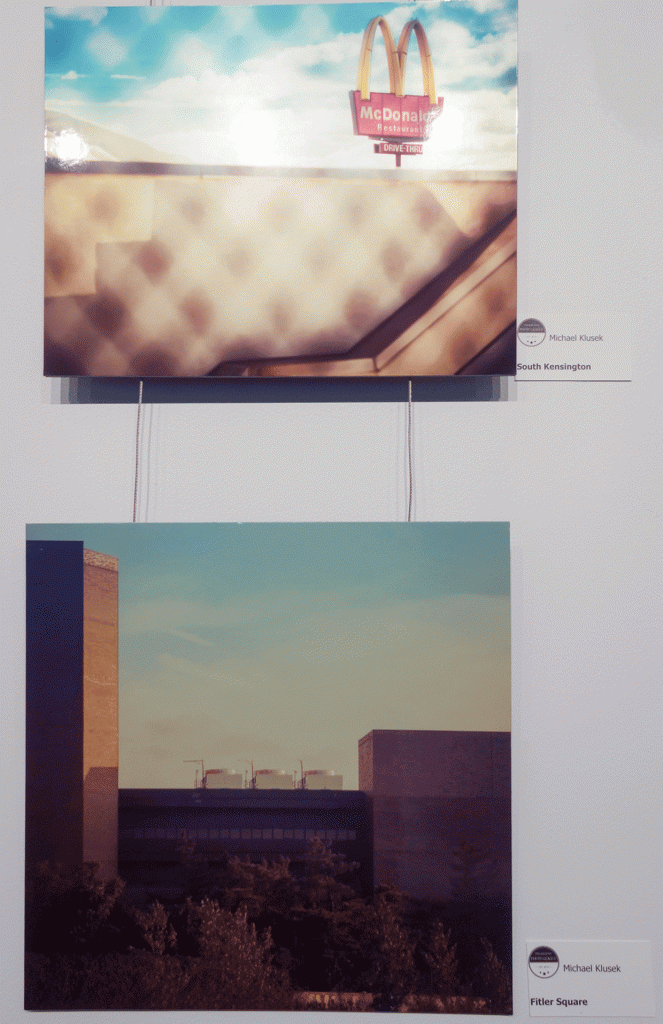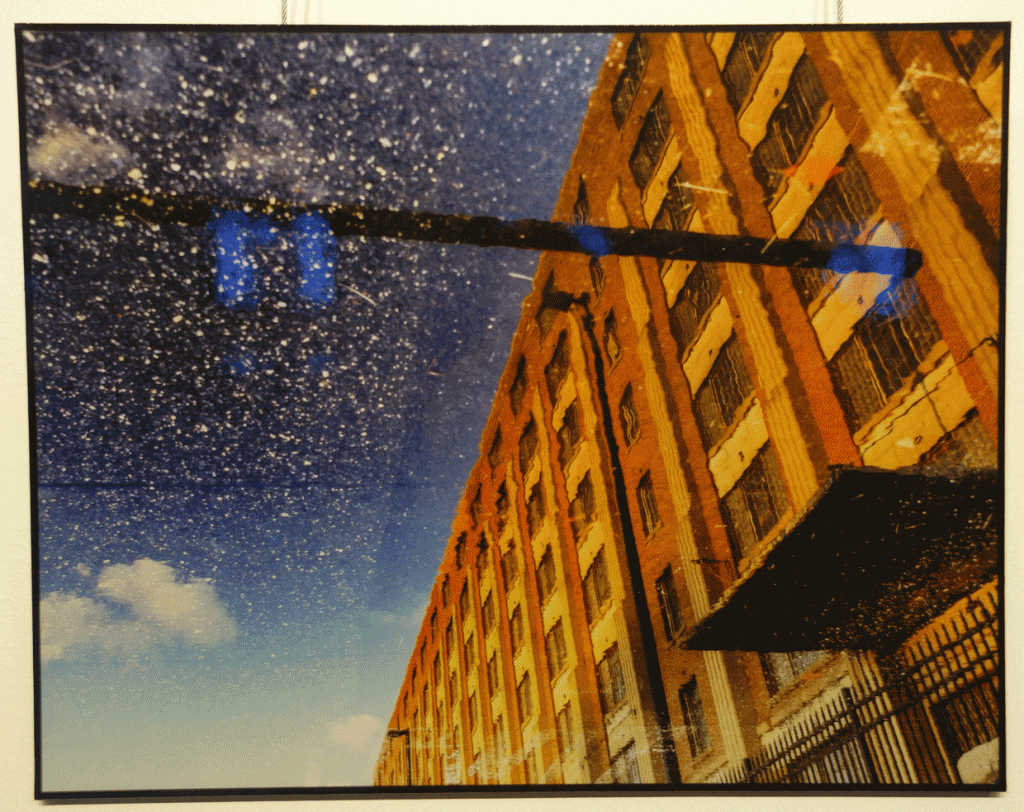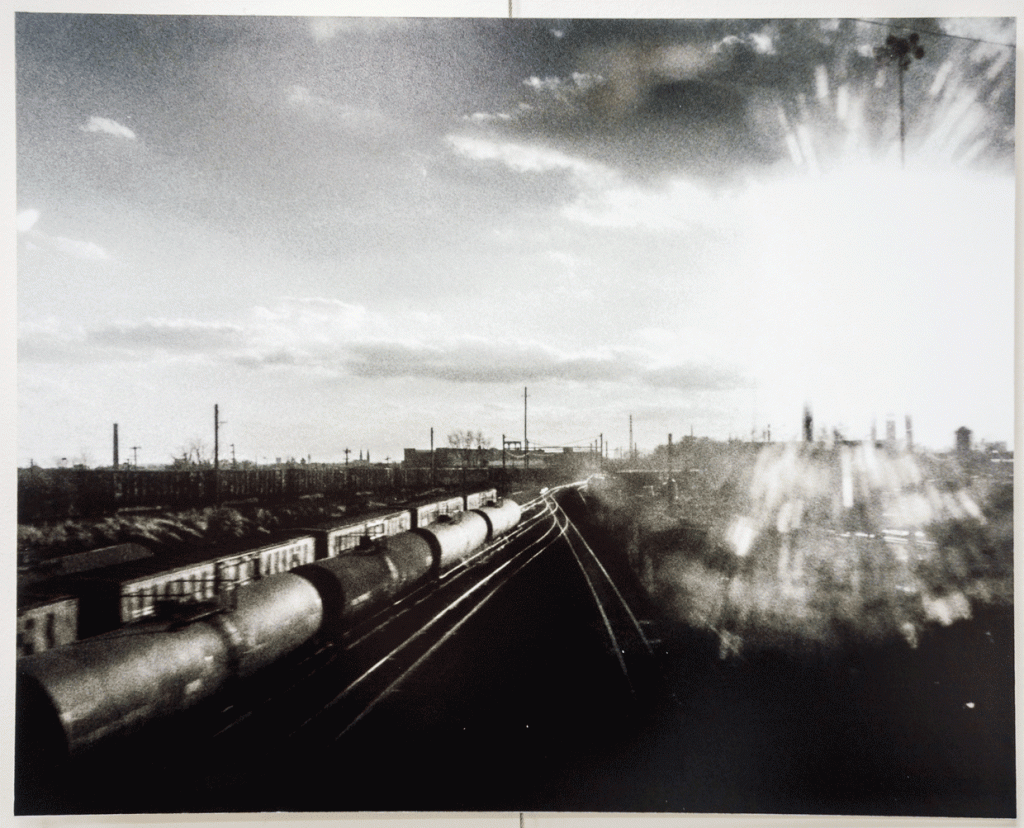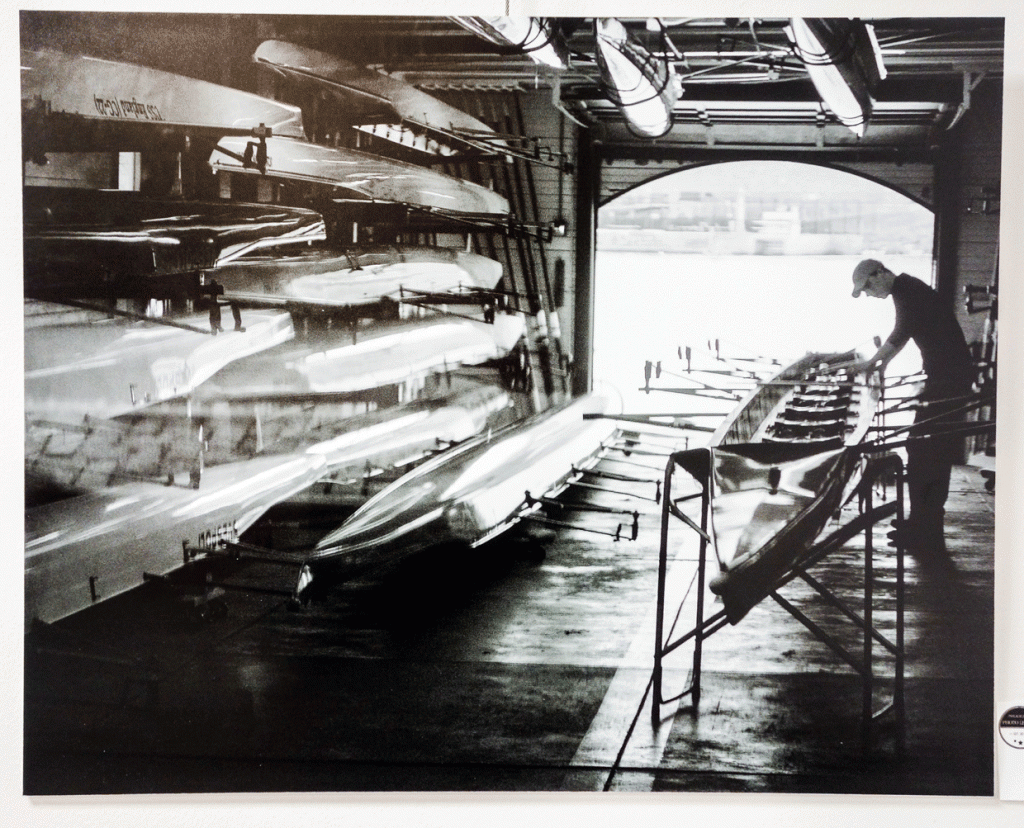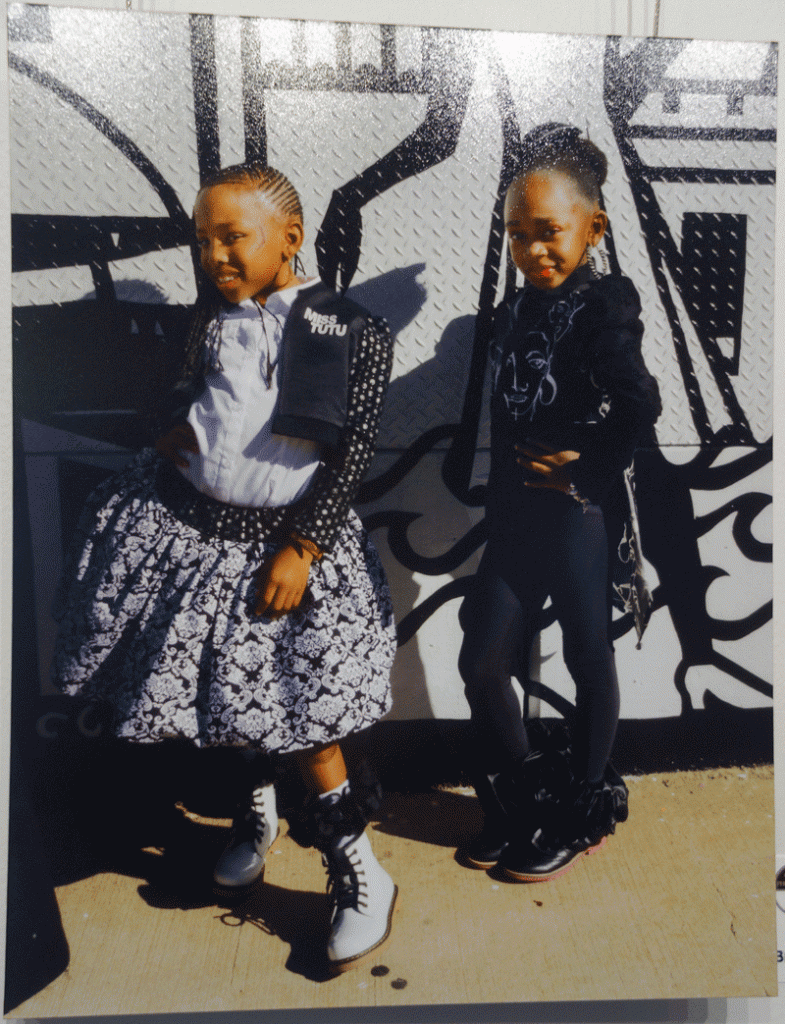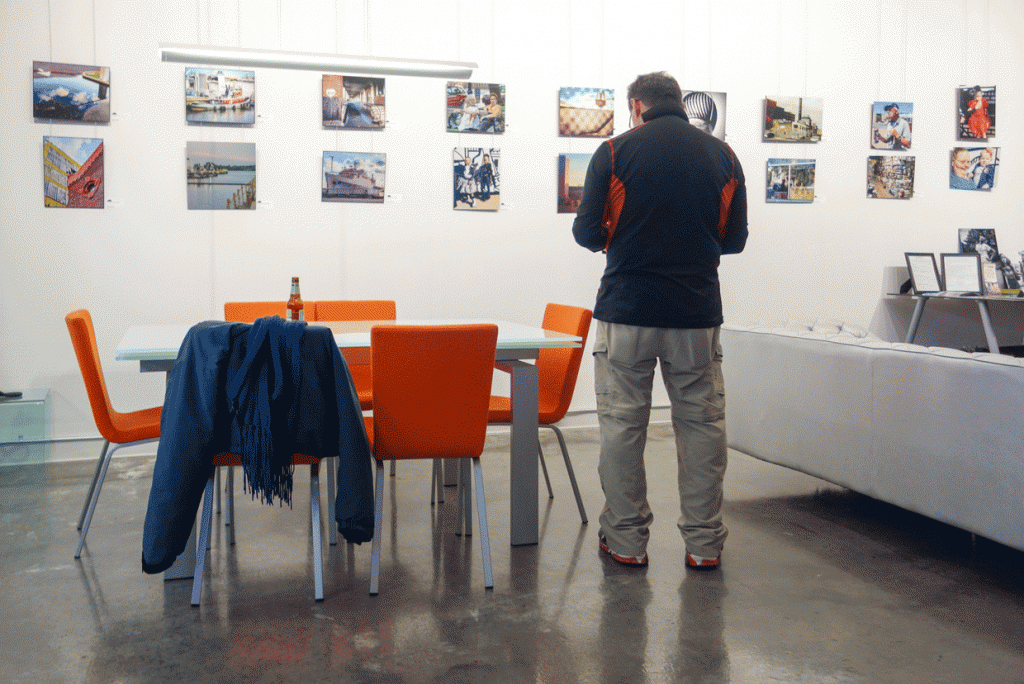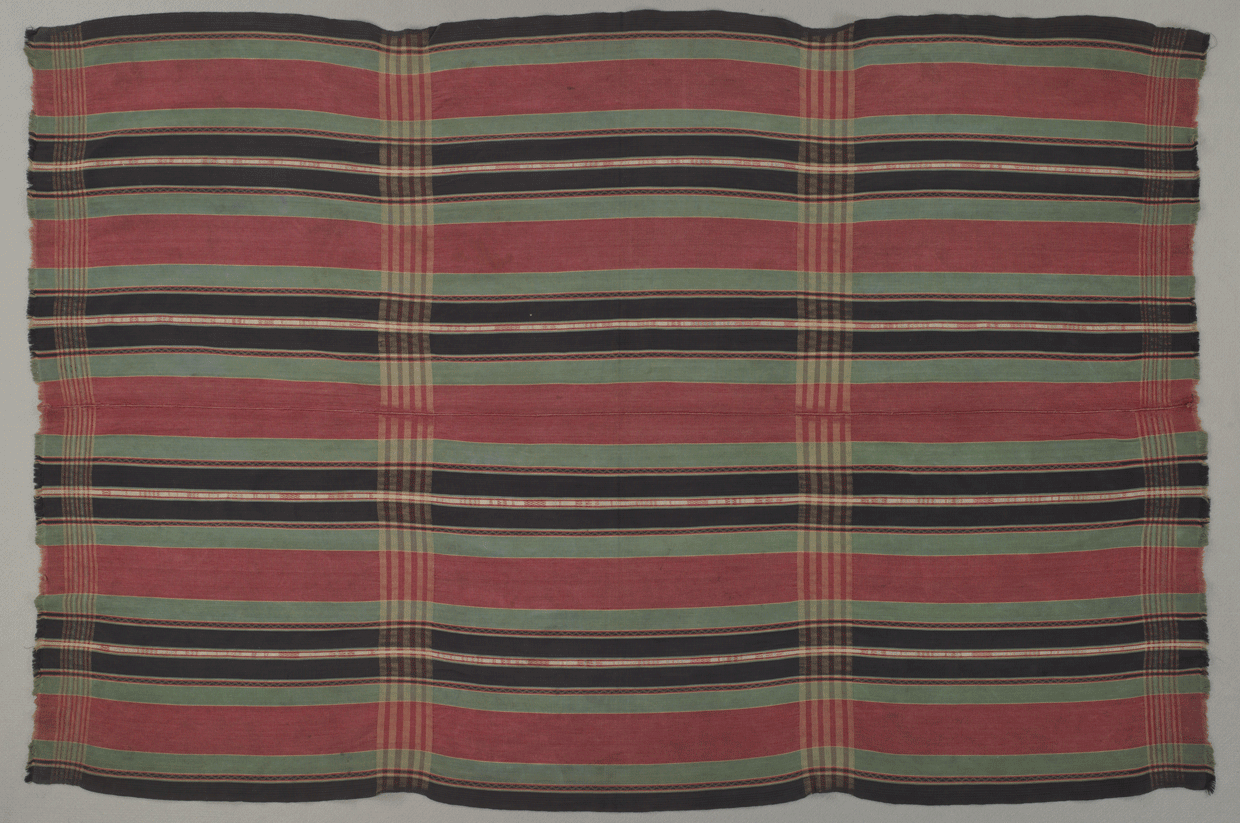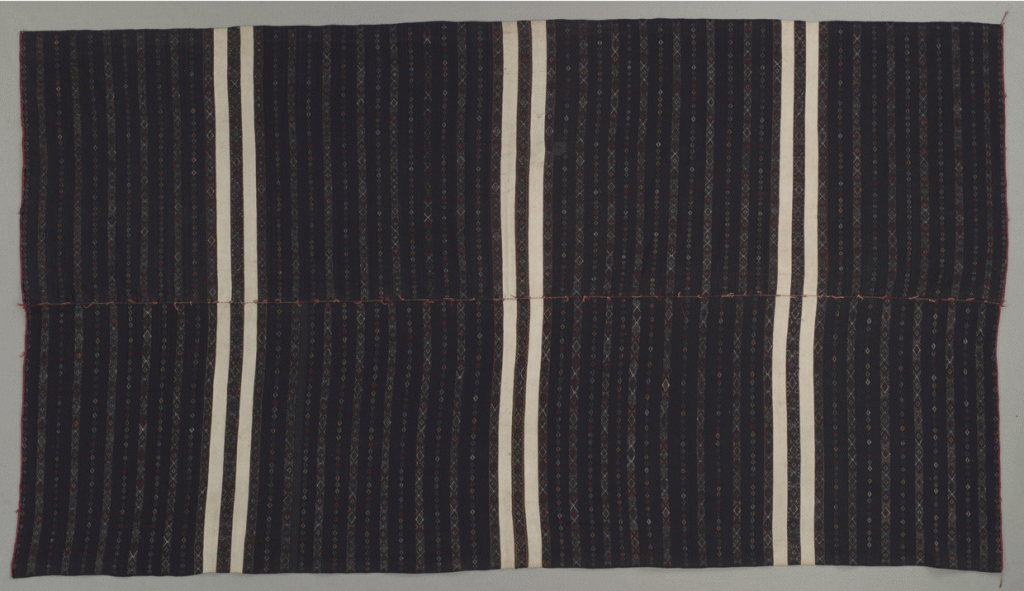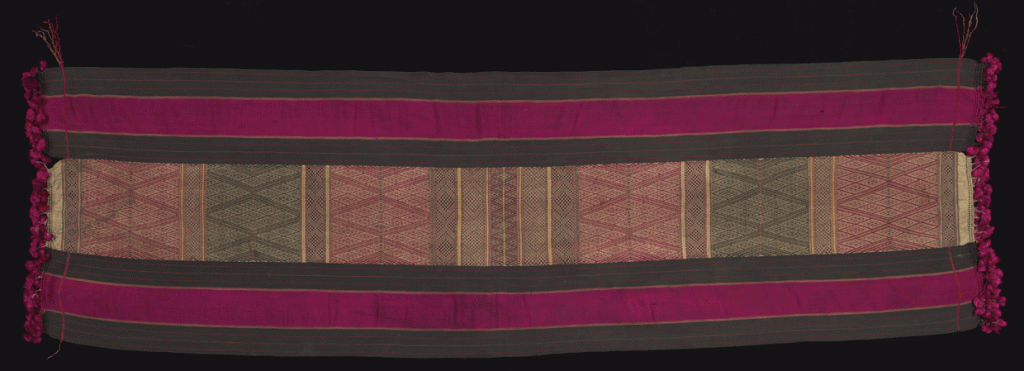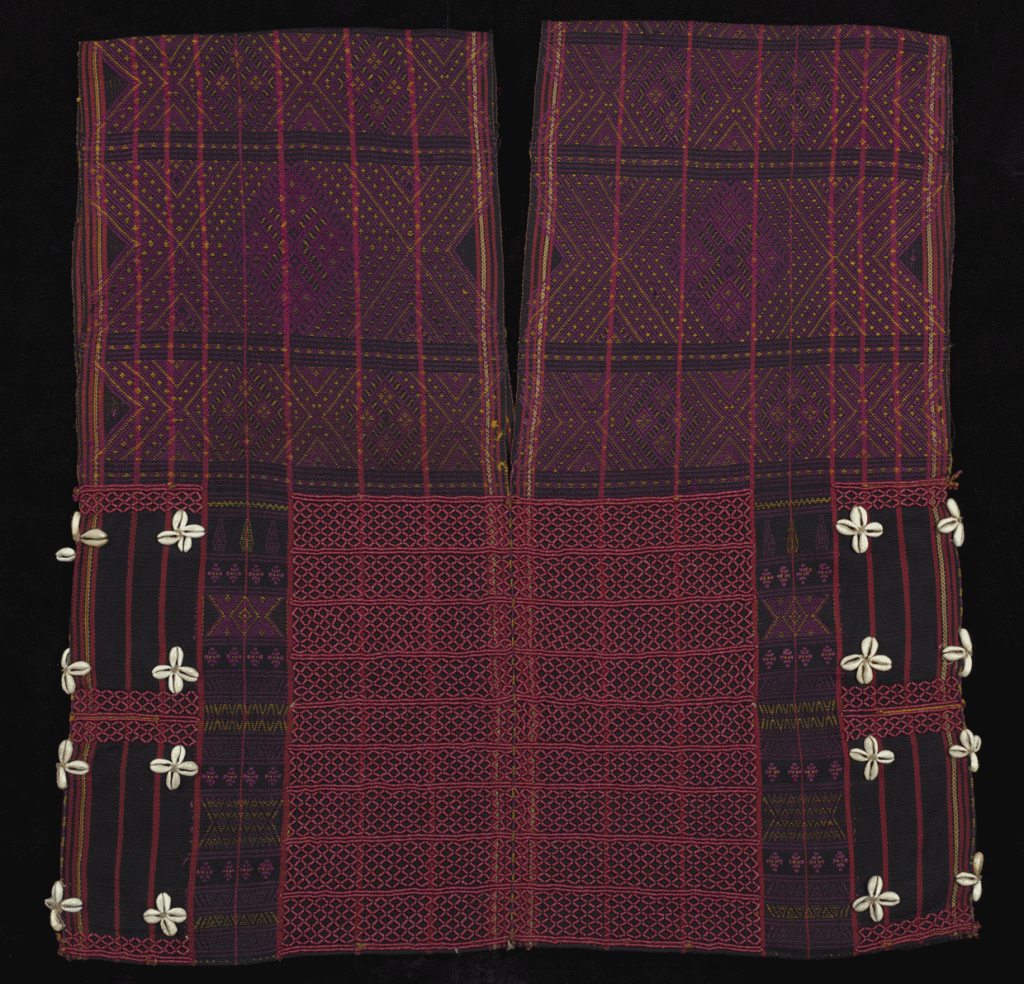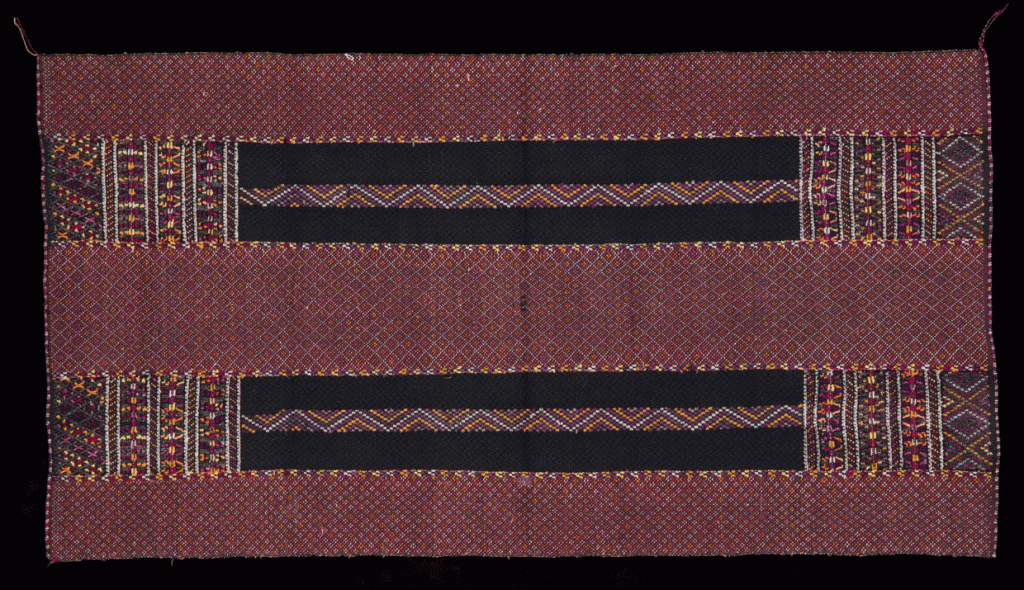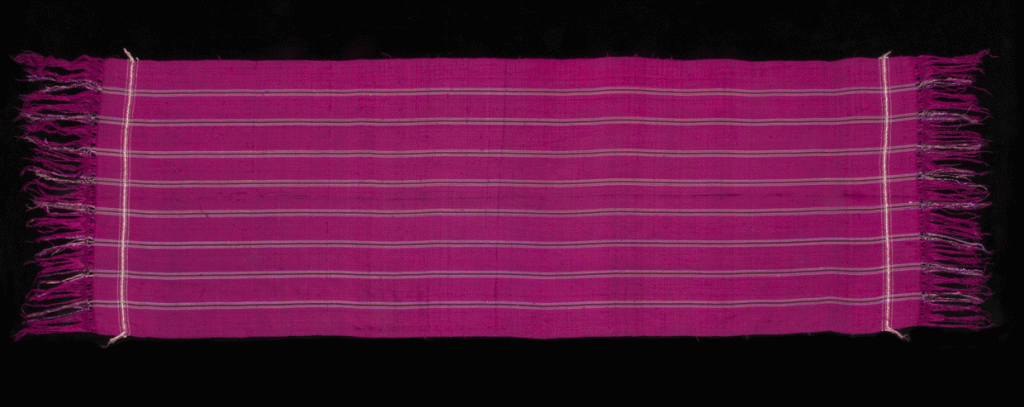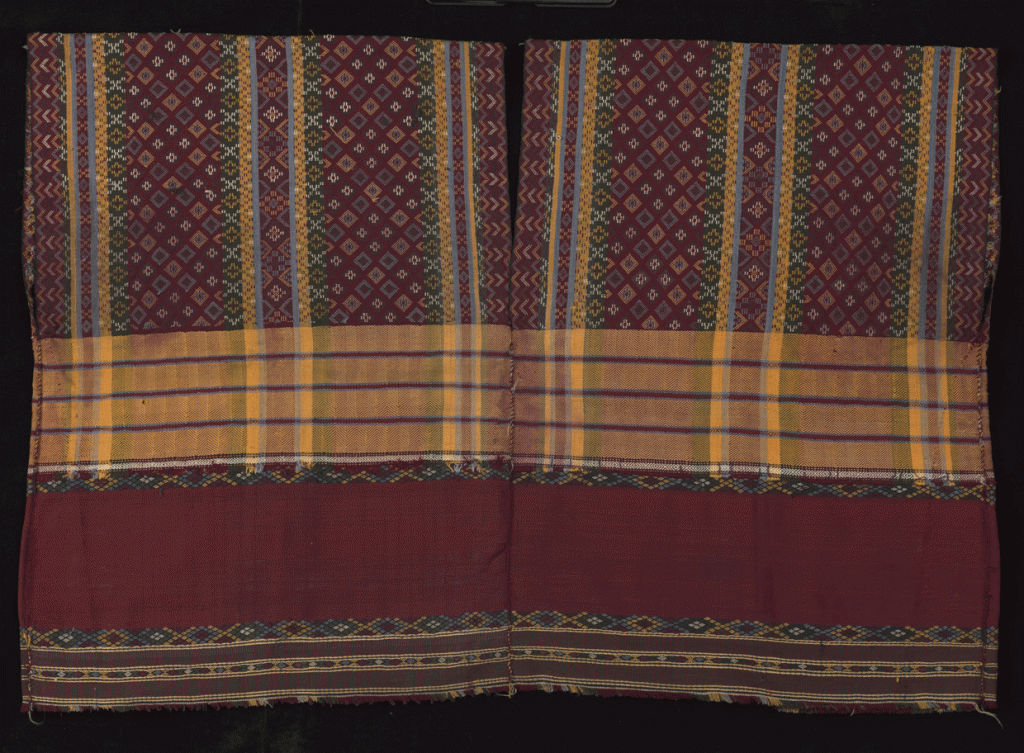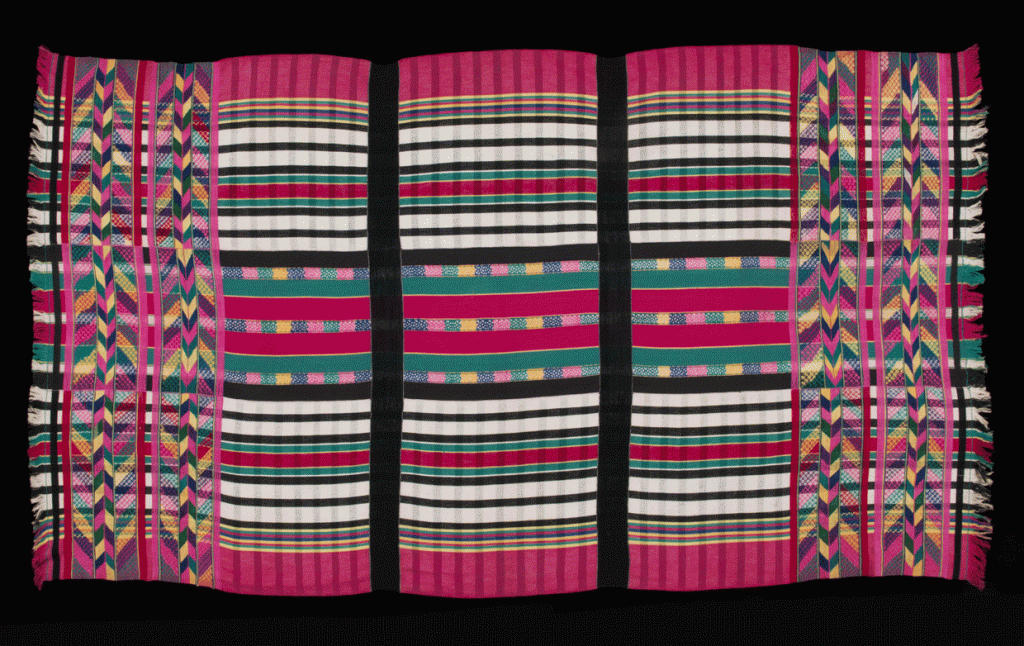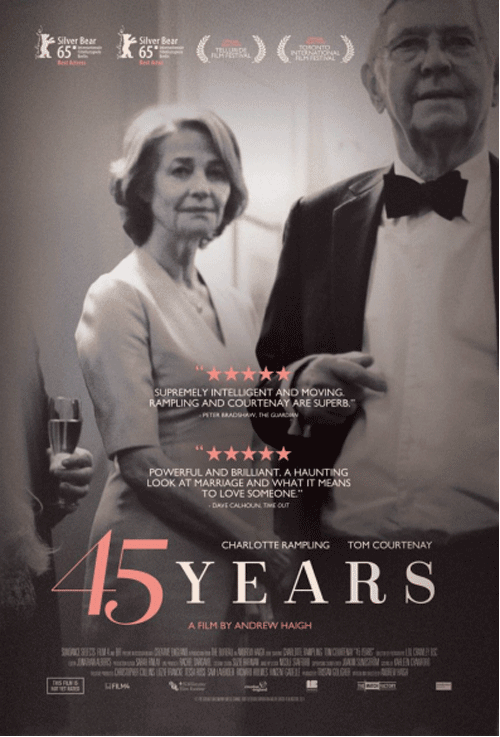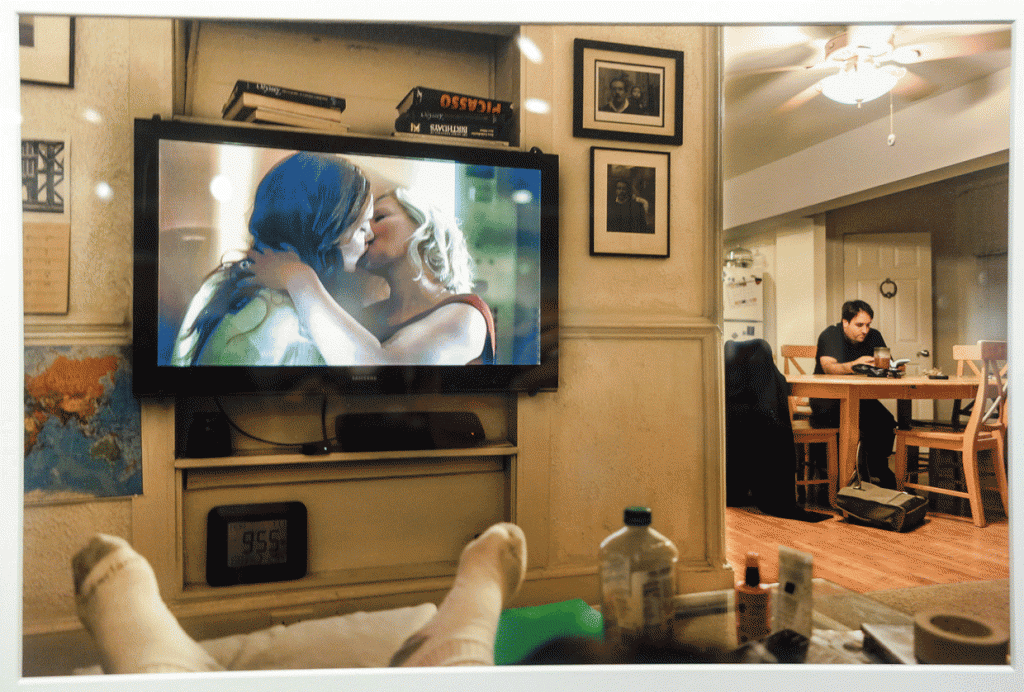 Wayne Klaw, Disconnected (2016), archival injket, Home, Markeim Arts Center
Wayne Klaw, Disconnected (2016), archival injket, Home, Markeim Arts Center
HOME
by Laura Storck
This exhibit is truly a diverse collection of images based on the idea of “home” from the myriad viewpoints of 35 local photographers. To be honest, I looked forward to seeing others’ interpretations of this topic with incredible anticipation and intrigue.
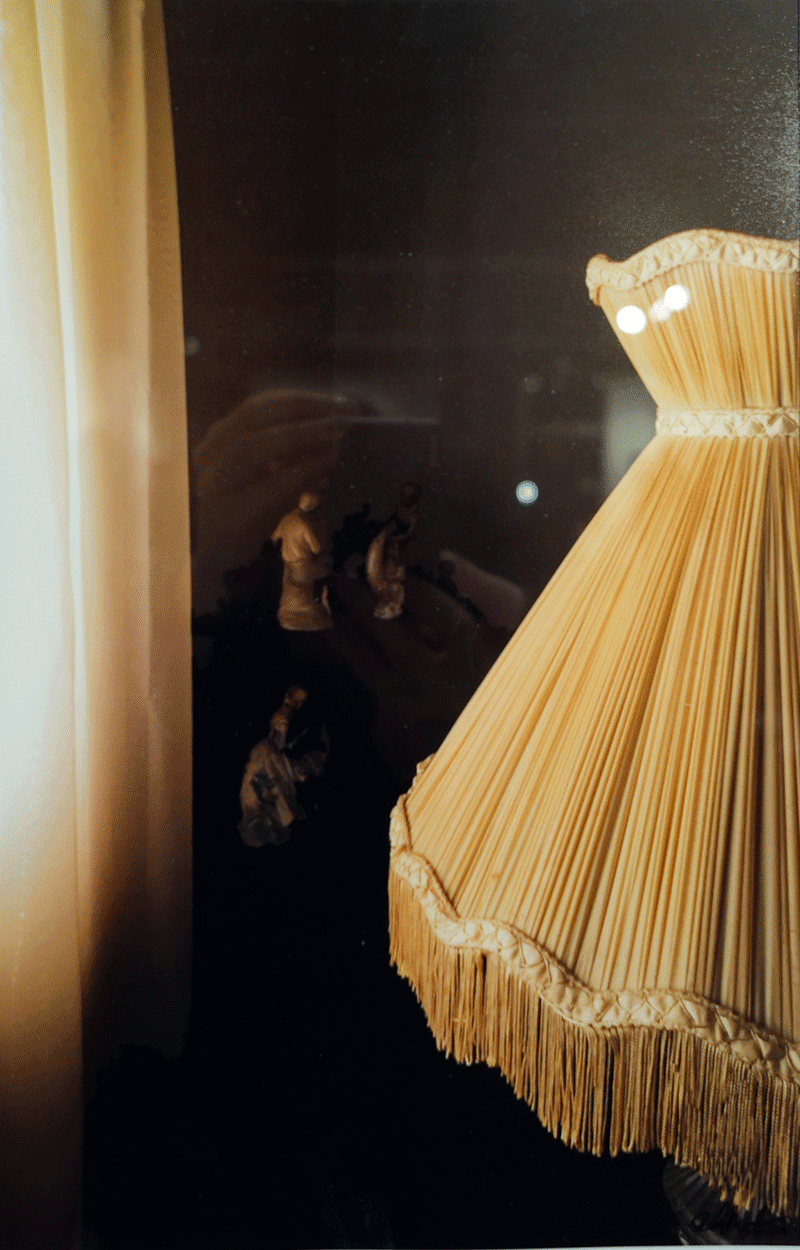 Richard Montemurro, Cozy Corner (2016), pigmented archival inkjet print
Richard Montemurro, Cozy Corner (2016), pigmented archival inkjet print
“There are many items throughout our home that are photographable and from time to time have been photographed. Most of them have been taken for granted as household decorations or ignored until I decide to photograph some of them. Such is the case with these figurines, tucked away on a shelf in a dark corner of our living room, behind a table lamp. Often seen and taken for granted – until now.” – Richard Montemurro
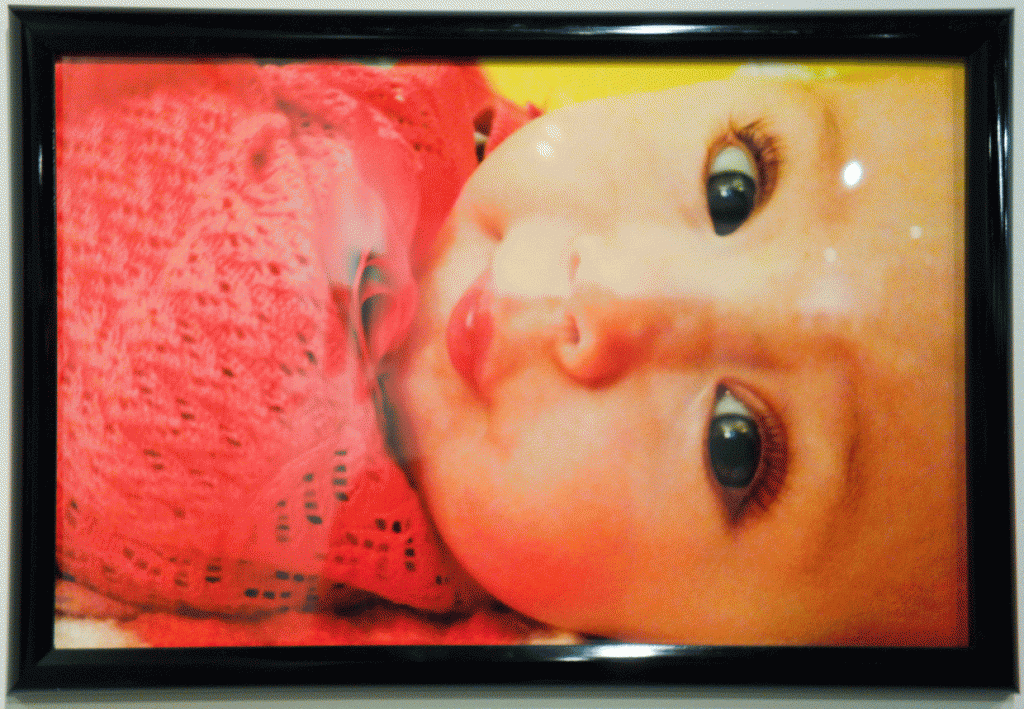 Melissa Hellwig, Mabel (2015), digital photograph
Melissa Hellwig, Mabel (2015), digital photograph
Mabel by Melissa Hellwig: “Home is where the heart is and my heart is my beautiful daughter, Mabel. I took this photo during her monthly photo shoot when she turned 6 months old. She loves having her picture taken!”
What is home? According to the prospectus: “Home” will be a show of images that presents compelling photographs on any of the aspects or themes of “home”. Images submitted should be those that the photographer connects to an idea of “home” – this is inclusive of any definition or personal connection and could be home sweet home, home run, home town, home stretch, homey, home free, home base, etc.
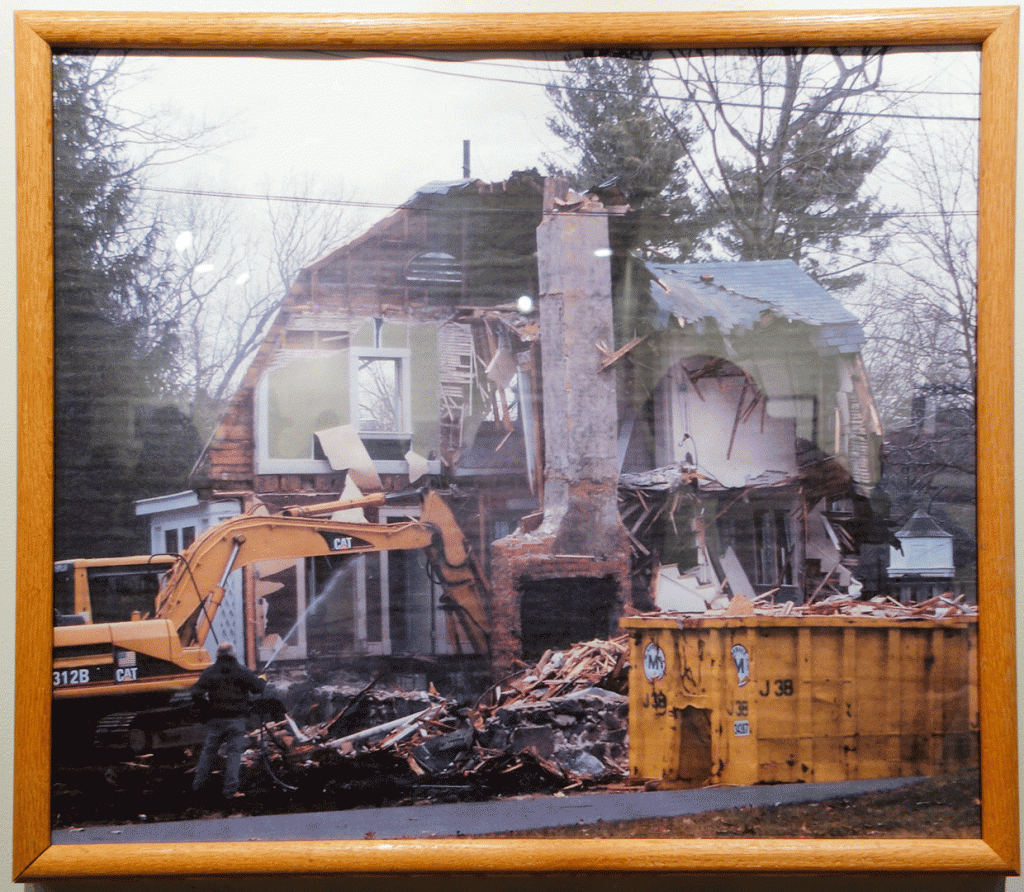 Ellie Wright, Twenty Gammons Road (2012), laser print
Ellie Wright, Twenty Gammons Road (2012), laser print
“Twenty Gammons Road passed into memory February, 2012. Its passing was attended by its most recent resident as witness to the 94 years of shelter it provided beginning in 1918. Twenty Gammons Road is survived by the memories of life lived within its walls.” – Ellie Wright
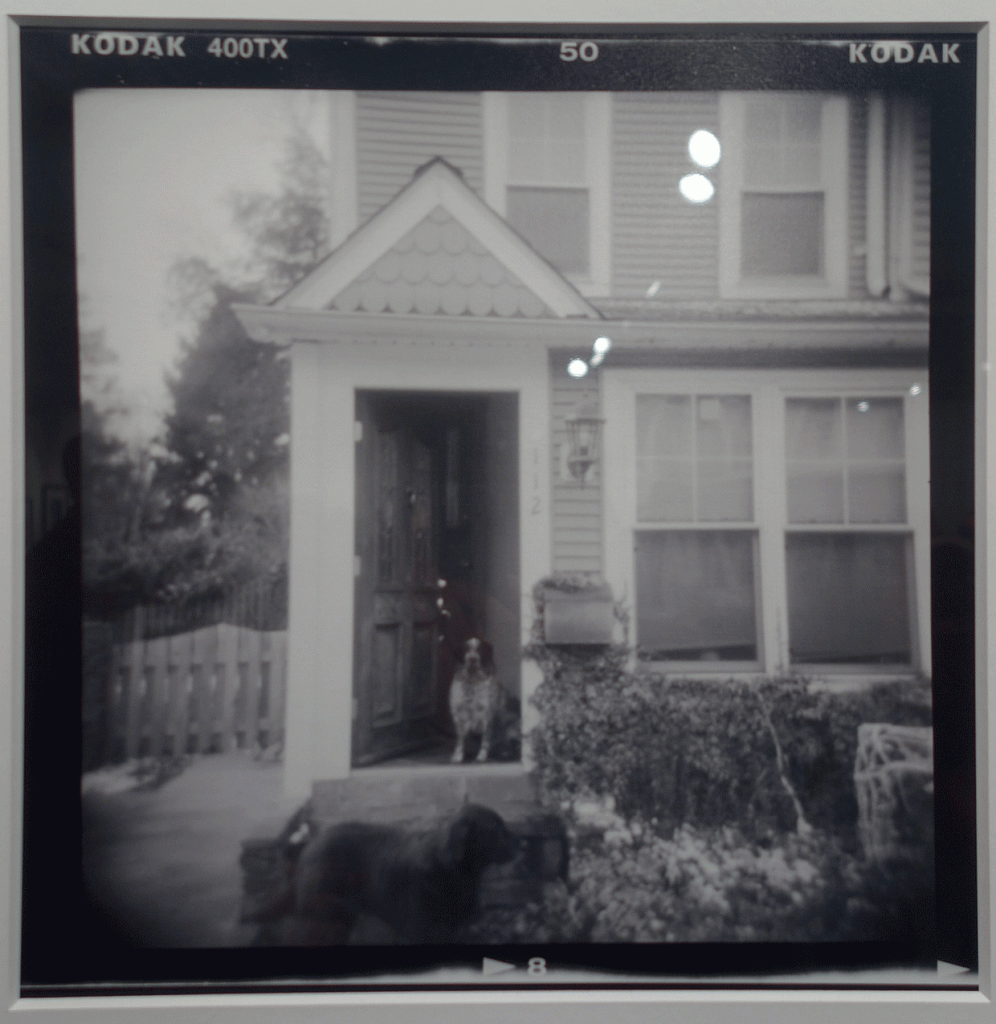 Christine Foster, Joey’s House (2013). archival giclee print, shot on film with a Holga
Christine Foster, Joey’s House (2013). archival giclee print, shot on film with a Holga
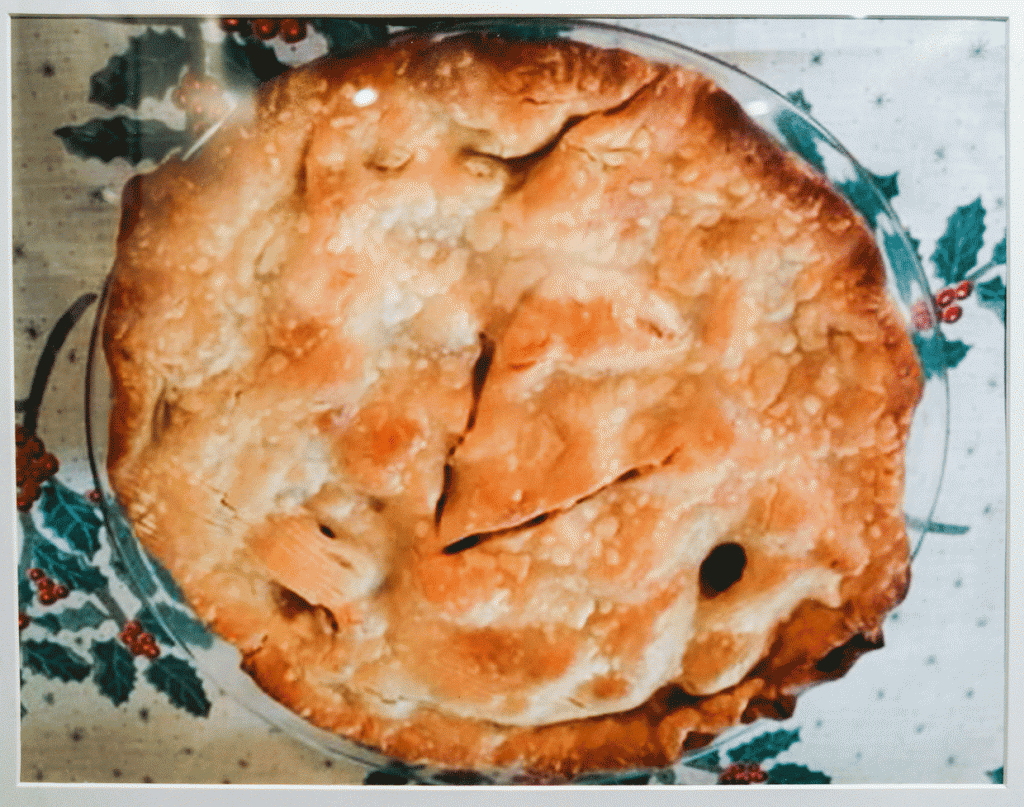 Pat E. Fitzgerald, Homemade Apple Pie (2015), chromogenic print
Pat E. Fitzgerald, Homemade Apple Pie (2015), chromogenic print
“Ever since I ate a piece of Carolyn’s homemade apple pie, I have not been able to eat one that is bought at a store, served in a restaurant, or homemade by anyone else. As you can see from the photo, the consistency of the crust enhances its taste, but what makes Carolyn’s apple pie so perfect is that every apple slice is deliciously soft–there isn’t one hard apple slice in the entire pie!” – Pat E. Fitzgerald
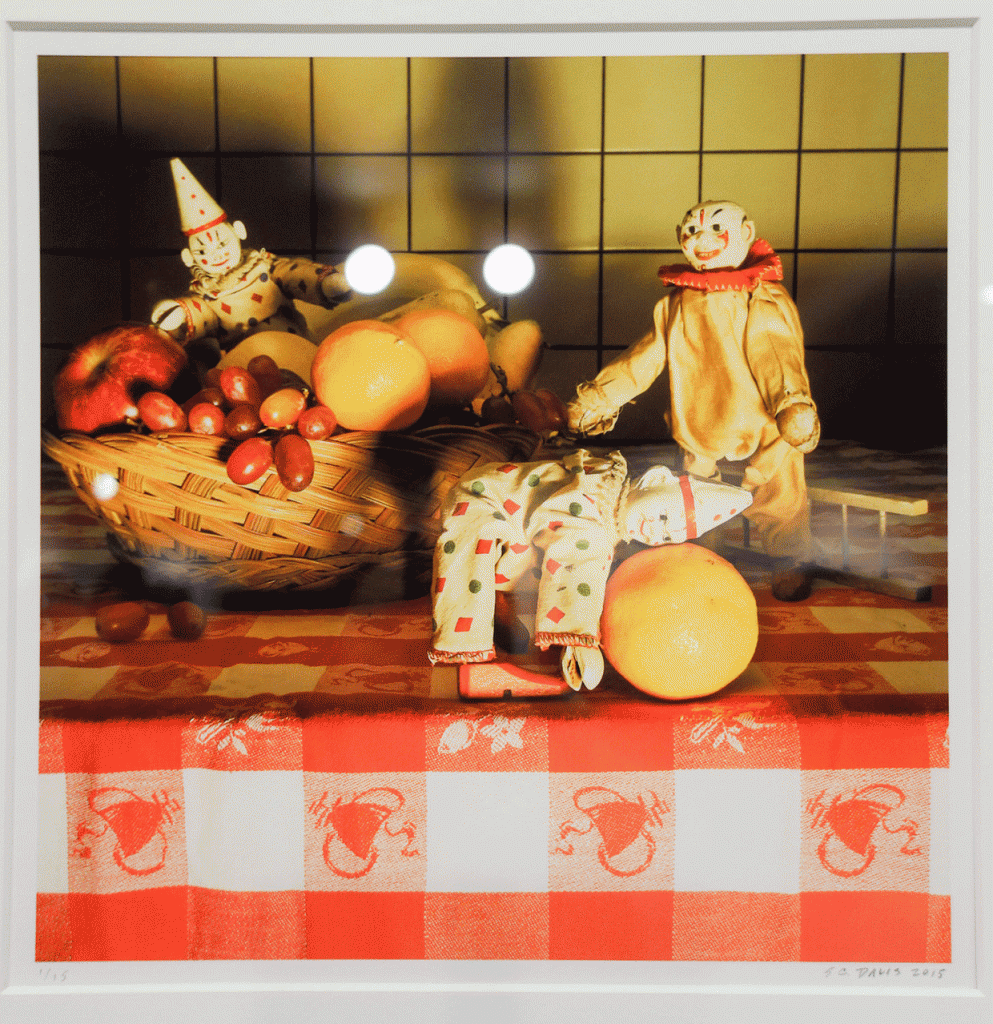 Sandra C. Davis, Home Invasion-Stealing Fruit (2015), archival pigment print
Sandra C. Davis, Home Invasion-Stealing Fruit (2015), archival pigment print
“The Home Invasion series are images which will be published in book telling the story of old toys that have been put away in a box and left forgotten in the basement. They come to life and make their way out of the basement and into the home to begin making mischief while the humans sleep. Did you ever wonder how that piece of fruit ended up in the middle of the floor? Or what happened to that other sock? How did that book get knocked from the shelf? Perhaps they are in your home and are answer to those unsolved mysteries.” – Sandra C. Davis
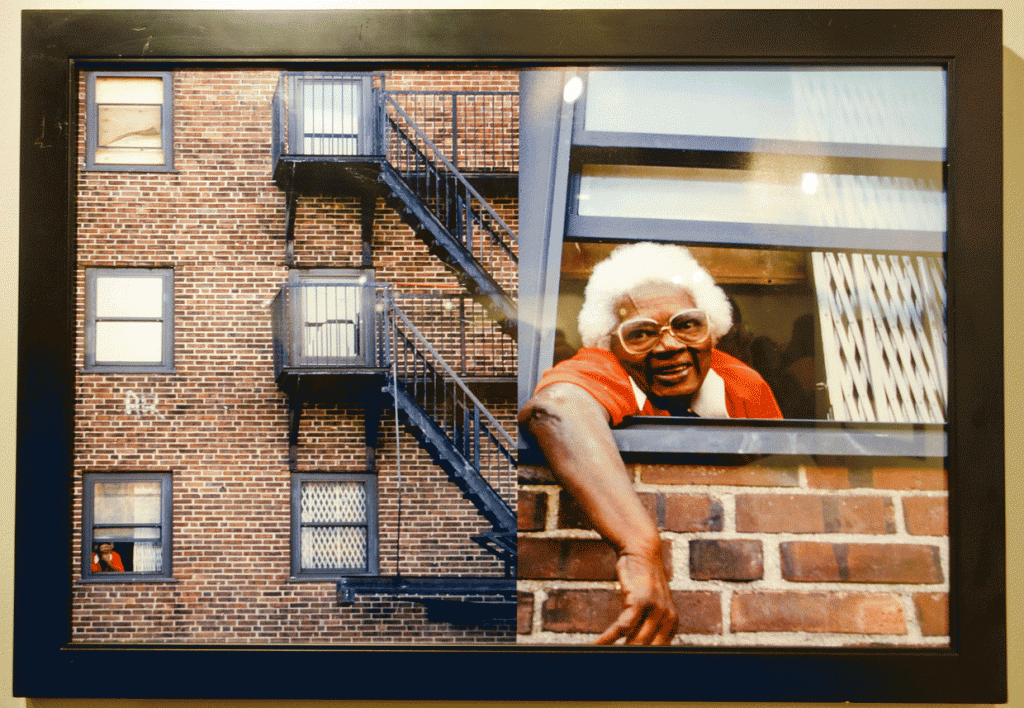 Erik James Montgomery, Home (1998), chromogenic print
Erik James Montgomery, Home (1998), chromogenic print
“My friend and I participated in a community outreach at a housing project in Newark where residents received free food and clothing. While there I noticed an elderly woman looking at us from a distance through her window. I was intrigued so I grabbed my camera and took the first photo. As I walked closer to the subject I saw all of the broken and boarded up windows in her building. Amazingly, she secured her windows with store grates! I’ve seen a lot of peculiar things over my life but having store grates inside someone’s apartment was incredulous.
I approached the senior and asked if I could take her picture. She obliged and then told me that she has lived there for over 40 years and has seen her community decline because of crime and drugs. I asked her why she doesn’t simply move away from there because it’s so dangerous. She replied, “Baby, I can’t leave, this is my home.” Her weighty words taught me that compassion plus commitment is the foundation of any community.” – Erik James Montgomery
When I was invited by curator Norm Hinsey to participate in the group photography show themed HOME at the Markeim Arts Center, I wasn’t quite sure I wanted to participate. To me, the word home evokes ideas of a warm, fuzzy, safe, and nurturing place — also a place of which I have never felt connected. After much pondering, Billy Joel’s ballad “You’re My Home” came to mind. Yes, that’s it. This song resonates with me. Home for me is not a physical place, but a feeling. Relationships. Comfort. Self-acceptance. Authenticity. Love. “Look within yourself”, my inner voice whispered, “and you’ll find your meaning.”
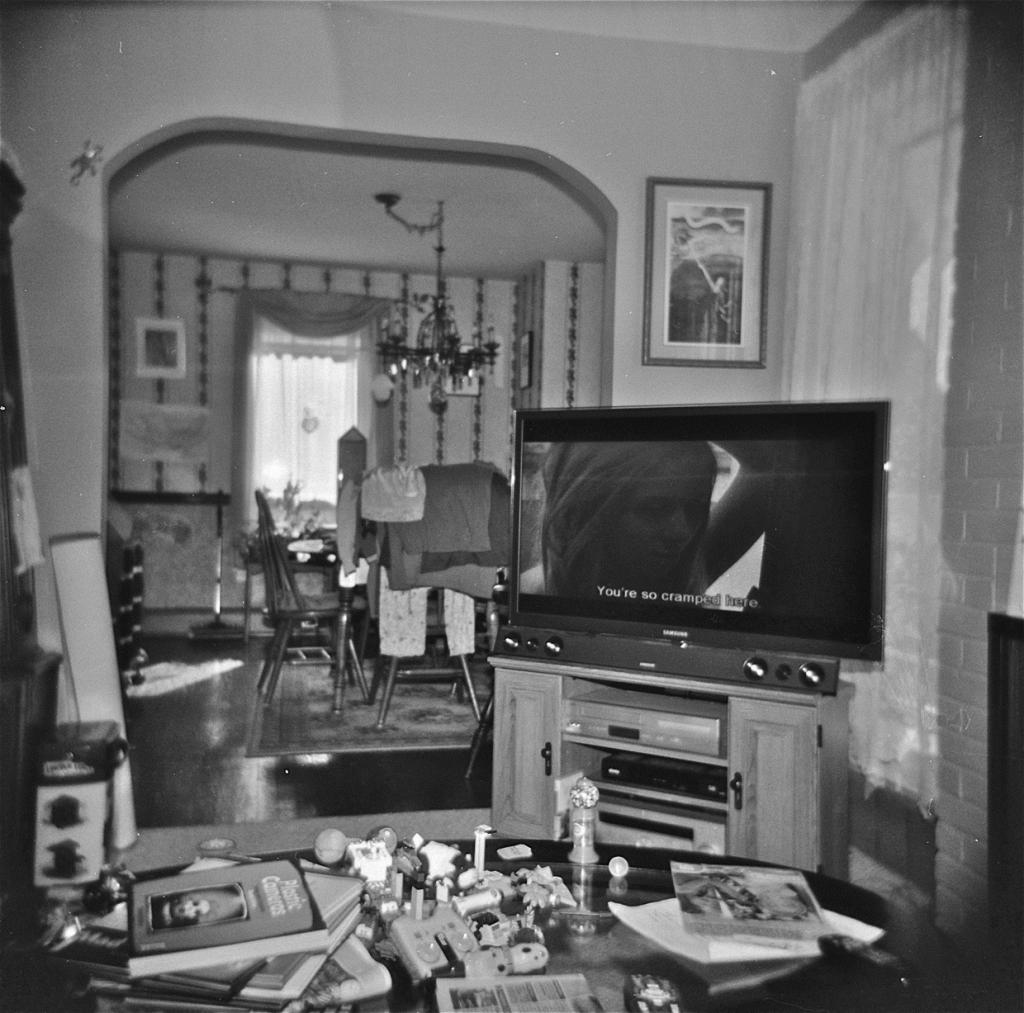 Laura Storck, Revelation as a Wife and Mother (You’re so cramped here.), 2011, silver gelatin print
Laura Storck, Revelation as a Wife and Mother (You’re so cramped here.), 2011, silver gelatin print
After much recollection and pondering, I realized that because of my nomadic spirit and constant cravings, the concept of home isn’t a place, it’s a sensibility. It’s the notion of feeling secure within myself.
My image “Revelation of a Wife and Mother (You’re so cramped here.)” was a decisive moment for me. Several years ago, I had just started a Holga camera and darkroom class at the University of the Arts and was playing around with the new detachable flash that had arrived in the mail. While watching a Serbian film with English subtitles made in the late 1960’s, I randomly snapped a photo while firing off the flash to figure out how it worked. It wasn’t until printing the enlarged 120mm film image in the darkroom did I hold a clear vision of what I had captured — not just a black and white image of my messy living room, but a snapshot which perfectly conveyed how I truly felt on that cool October afternoon in 2011.
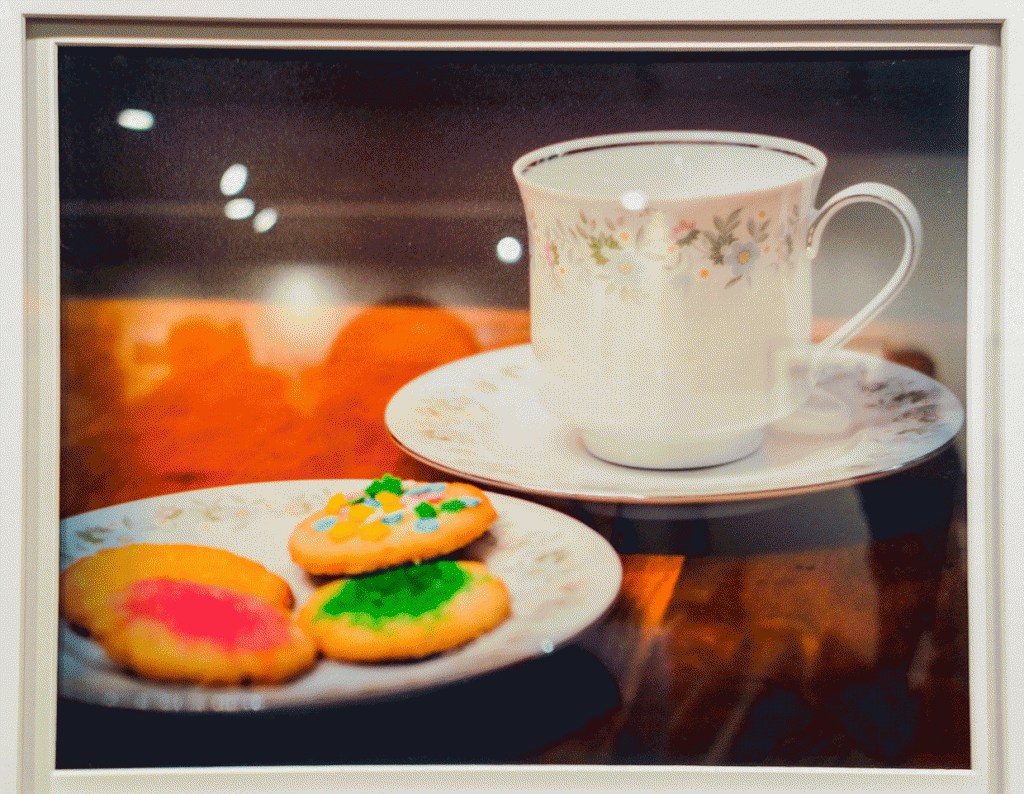 Anne M. Ferara, Grandma’s China (2016), chromogenic print
Anne M. Ferara, Grandma’s China (2016), chromogenic print
“This image evokes memories of home and family gatherings.” – Anne M. Ferara
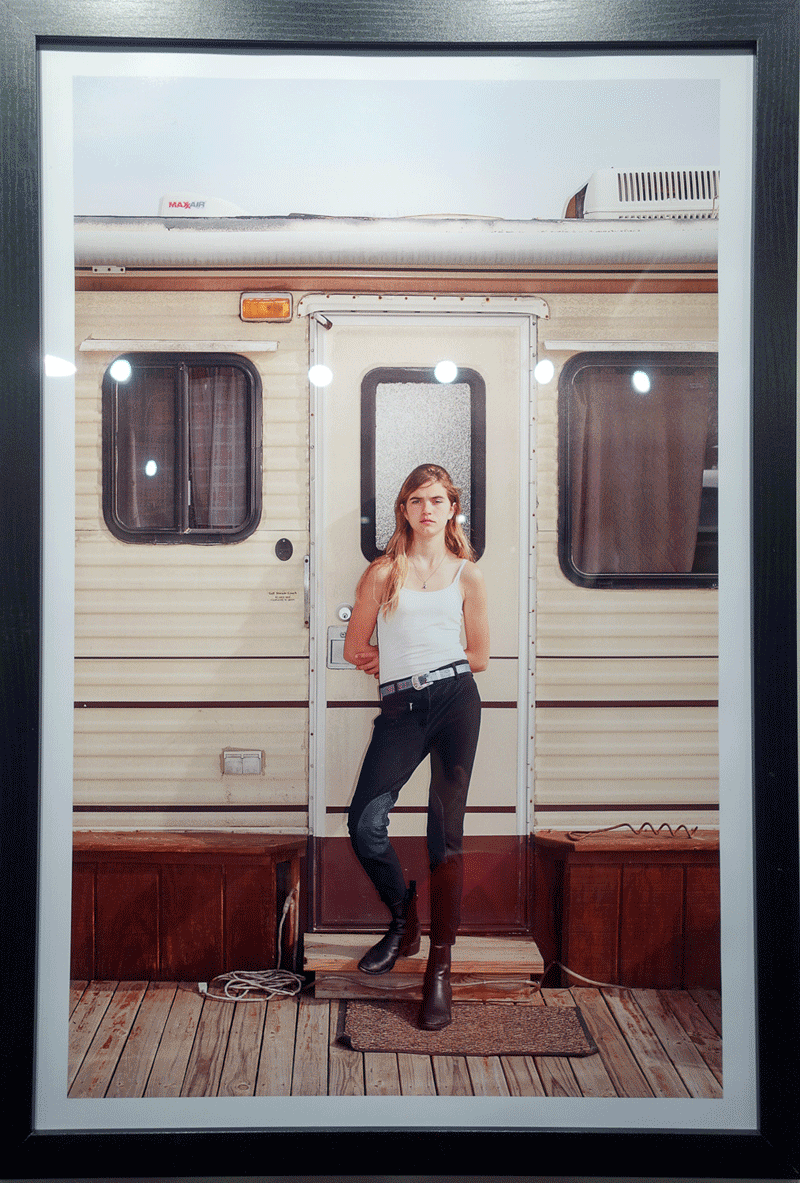 Ola Wilk, Suzy (Walkersville, Maryland), 2014, chromagenic print
Ola Wilk, Suzy (Walkersville, Maryland), 2014, chromagenic print
“Suzy, a proud teenage horse trainer and show competitor, at the entrance to a trailer on her horse farm in rural Maryland.” – Ola Wilk
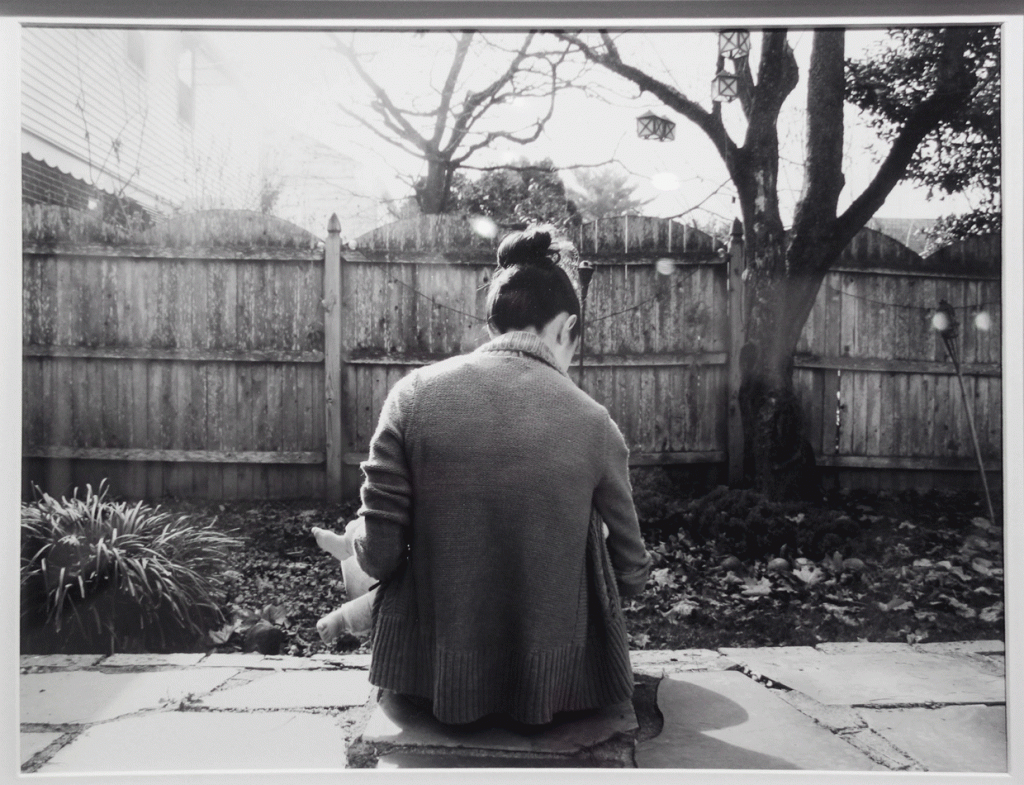 Steve Tornone, Home-cooked Meal (2015), silver halide print
Steve Tornone, Home-cooked Meal (2015), silver halide print
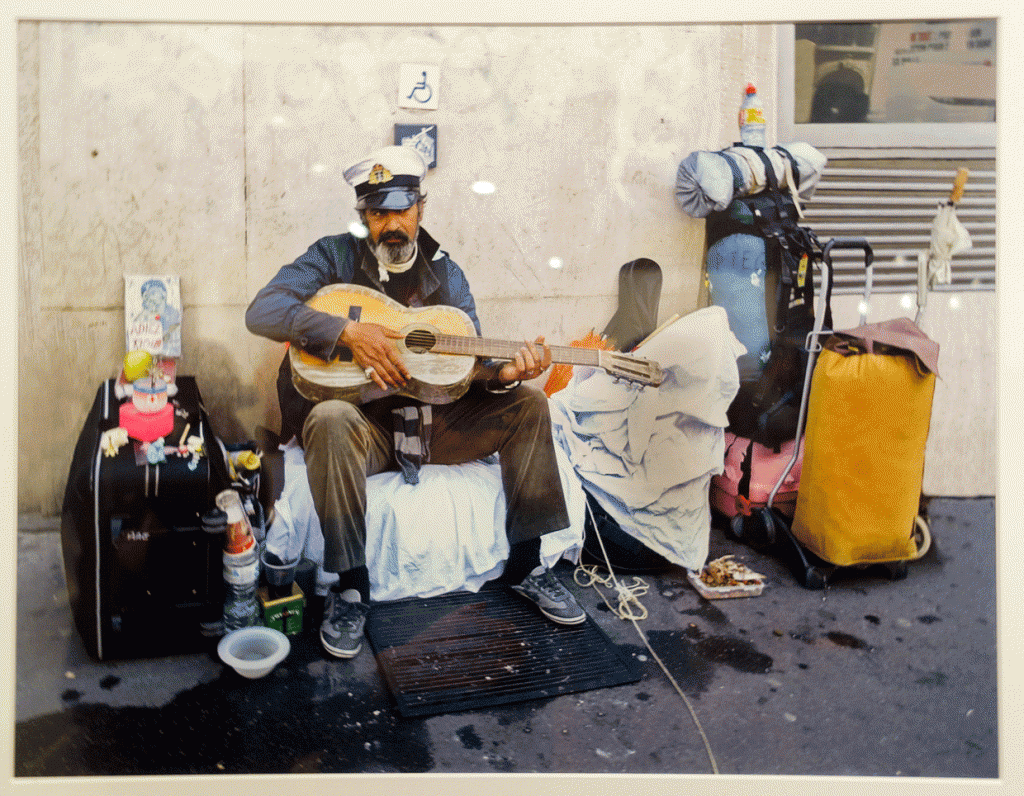 Lionel Goodman, Home Sweet Home (2015), archival pigmented inkjet
Lionel Goodman, Home Sweet Home (2015), archival pigmented inkjet
“This photograph of a Roma (gypsy) was taken summer 2014 on the busy Paris left-bank boulevard, Rue Vaugirard. It is noteworthy that the photograph depicts a common Parisian street scene well before the Syrian migration. These (illegal) homes on the street frequently include tents, babies and even pets. Except for the Champs Elysees right-bank quarter they are generally tolerated by the police. These Roma encampments in Paris reflect a long standing internal European migration problem.” – Lionel Goodman
I draw much contentment and energy from the beautiful relationships I’ve formed over the years. Most of all, I’m learning to feel completely whole by allowing myself to pursue my deepest interests and passions without abandon — my art — thus evolving to self-actualization (finally) without judgment but with encouragement, patience, and pride. This is home to me — being comfortable in my own skin. I haven’t made it home yet but the journey is an interesting, poignant, and exciting adventure.
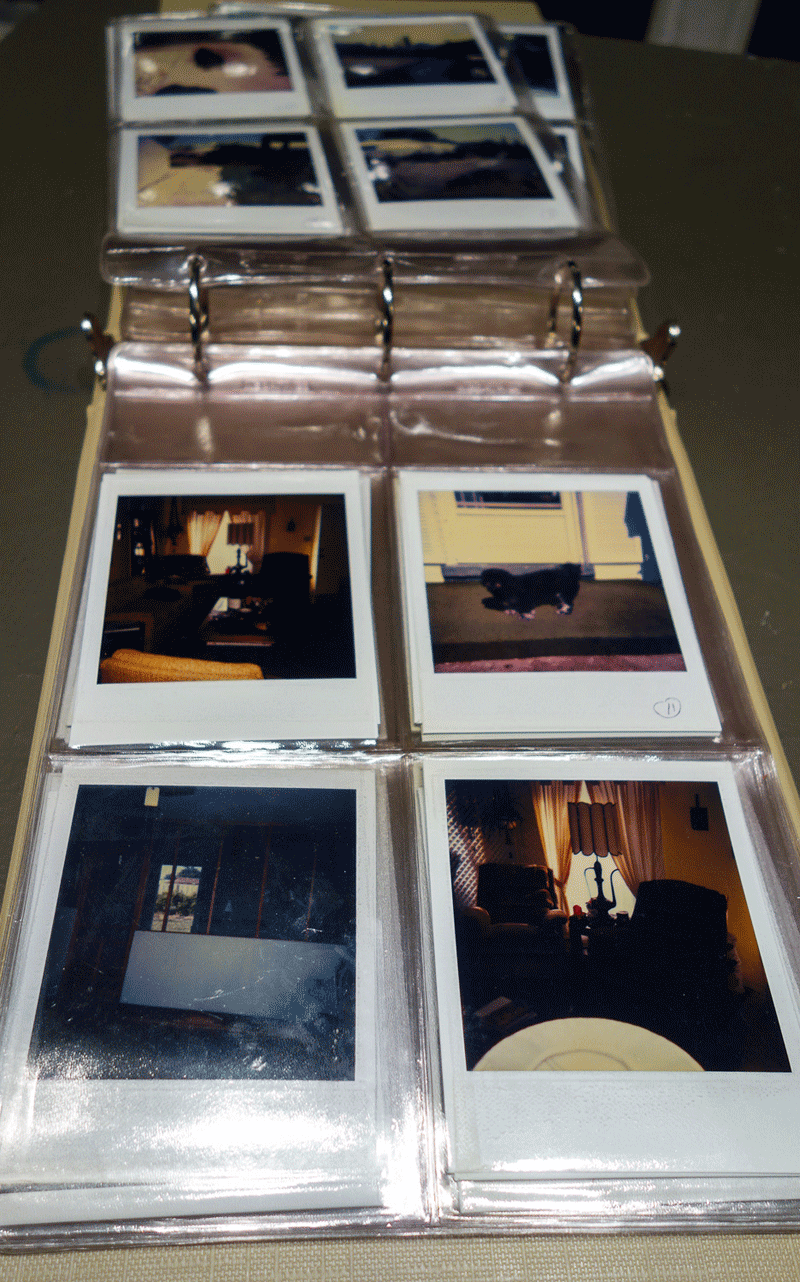 Collection of Norm Hinsey, Marvin’s Photo Album, Polaroid SX-70
Collection of Norm Hinsey, Marvin’s Photo Album, Polaroid SX-70
Participating artists in HOME include: Anne Ferara, Ava Hartline, Blaise Tobia, Christine Foster, Dave Magyar, Ellie Wright, Erik James Montgomery, Geoff McClain, Gloria Whitney, Heather Siple, Hope Ardizzone, Joan Wheeler, Joel Blum, Joseph Gilchrist, Kate McGovern, Kevin Provost, Laura Storck, Lionel Goodman, Melissa Hellwig, Ola WIlk, Pat Fitzgerald, Peter Burt, Richard Montemurro, Ruth Haines, S Gili Post, Sandra Davis, Scott Johnson, Sky McClain, Steve Tornone, Susan Spitz, Valerie Williams, Vera Hinsey, Vera Resnik, Wayne Klaw, and Whit McGinley.
Curator Norm Hinsey is a photographer, as well as director of CREON Gallery in New York City. He has curated several shows at the Markeim, including MYSTERIOUS, ALL NATURAL, INSPIRED, EYE OF THE BEHOLDER, and PORTRAIT. CREON has recently shown a retrospective of photographs by Krzysztof Zarebski; and hosted EXPOSED, an exhibition that included work by Ellen Carey and Amanda Means exploring new and unique photographic processes.
HOME will be on exhibit at the Markeim Art Center, 104 Walnut Street
(Lincoln Ave & Walnut St) Haddonfield, NJ 08033 through March 5, 2016, 856-429-8585 info@markeimartscenter.org
Written and photographed by Laura Storck
Laura Storck Photography ARTIST. SCIENTIST. PHOTOGRAPHER. ROCK STAR.: https://laurastorck.wordpress.com/
Instagram: http://instagram.
Facebook: https://facebook.com/laura.h.
Twitter: @Laura_Storck
Like DoNArTNeWs Philadelphia Art News Blog on facebook
Follow the new DoNArTNeWs.com
Follow DoN on Twitter @DoNNieBeat58
DoNArTNeWs on Tumblr
@donniebeat on Instagram
Affiliate Marketing [disclosure page] Shop on-line and help support DoNArTNeWs
Donate via safe and secure PayPal in the sidebar.
Billy Joel – You’re My Home (Live 1981)

